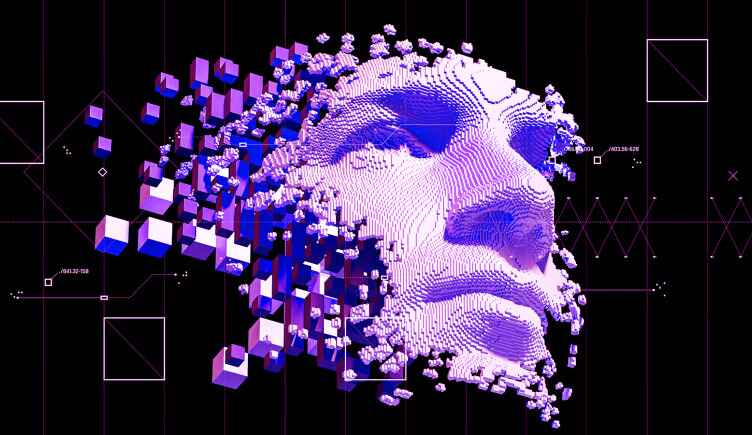Artificial Intelligence (AI) is a rapidly growing field with different types of AI systems. Understanding the difference between Narrow AI vs. General AI vs. Super AI is very important.
Narrow AI focuses on specific tasks, while General AI aims to match human intelligence across domains. Super AI refers to systems surpassing human capabilities.
This blog post will explain these three types of AI in simple terms, highlighting their key features, and potential implications. By the end, you’ll have a clear understanding of Narrow AI vs. General AI vs. Super AI.
Table of Contents
- Narrow AI
- General AI
- Super AI
- Key Differences Between Narrow AI vs. General AI vs. Super AI
- Key Similarities Between Narrow AI vs. General AI vs. Super AI
- Role of Narrow AI vs. General AI vs. Super AI in the Future
- Conclusion
Narrow AI

Narrow AI, also known as Weak AI or Applied AI, refers to artificial intelligence systems designed to perform specific, narrowly defined tasks.
These systems are trained and optimized for particular applications, excelling within their specialized domains.
What is Narrow AI?
Narrow AI systems are not meant to mimic human-level intelligence or operate across multiple domains. Instead, they are developed to excel at solving particular problems or carrying out specific functions. Some common examples include:
- Virtual assistants (like Siri, Alexa, etc.)
- Recommendation systems (for movies, products, etc.)
- Image and facial recognition
- Spam filtering
- Game-playing AI (like chess or Go)
Strengths of Narrow AI
- Highly efficient and accurate within their specialized area
- Can process vast amounts of data and spot patterns humans may miss
- Automates repetitive or complex tasks, saving time and effort
Limitations of Narrow AI
- Lacks general intelligence and flexibility
- Cannot transfer knowledge or skills to other domains
- May fail at tasks outside its specific training
While Narrow AI has proven incredibly useful in various applications, it represents a confined form of machine intelligence. As we’ll see, General AI and Super AI aim to overcome these limitations.
General AI

General AI means artificial intelligence that can perform any task that a human can. It is also called Human-Level AI or Strong AI.
General AI would have flexible intelligence, like humans. It could learn and reason across many different areas.
What is General AI?
General AI systems would have human-like abilities in areas such as:
- Learning and reasoning
- Problem-solving
- Decision making
- Adapting to new situations
Unlike Narrow AI, which focuses on one task, General AI aims to achieve overall human-level intelligence that transfers across domains.
Current Status of General AI
Creating General AI is an extremely difficult challenge. Despite a lot of research, we do not yet have systems that match the general intelligence of humans. There are still many unsolved problems.
Super AI

Super AI refers to future artificial intelligence that goes beyond human-level intelligence and abilities. It is also called Artificial Superintelligence.
What is Super AI?
Super AI systems would be vastly smarter than the best human minds in every field, including:
- Processing power
- Memory
- Reasoning capabilities
- Knowledge and skills
While difficult to imagine now, Super AI could solve problems and make innovations at an incredible scale once developed.
Potential Implications of Super AI
The creation of superintelligent AI could have huge impacts, both enormously beneficial or catastrophic depending on how it is developed and used. Experts urge careful planning to ensure Super AI remains under meaningful human control.
Key Differences Between Narrow AI vs. General AI vs. Super AI
The main distinctions between Narrow AI, General AI, and Super AI lie in their scope of capabilities and level of intelligence compared to humans. To understand it better, let’s look at how they differ across some key aspects:
| Aspect | Narrow AI | General AI | Super AI |
| Purpose | Specialized for one task | Match human intelligence across domains | Surpass human intelligence in every field |
| Abilities | Excels in its trained area, but limited | Flexible reasoning and learning abilities | Vastly superior processing, memory, and skills |
| Current Status | Numerous working examples (Siri, recommendation systems etc.) | Not yet achieved despite active research | Hypothetical future possibility |
| Strengths | Numerous working examples (Siri, recommendation systems, etc.) | General problem-solving, adapt to situations | Could innovate at incredible speeds |
| Limitations | Lacks general intelligence, transfer of skills | Extreme difficulty to develop | Potential risks if not developed carefully |
Key Similarities Between Narrow AI vs. General AI vs. Super AI
While Narrow AI, General AI, and Super AI differ vastly in their scope and level of intelligence, they do share some fundamental similarities in their core principles and approaches. Let’s look at how they are similar across certain aspects:
| Aspect | Narrow AI and General AI and Super AI |
| Based on | Machine learning algorithms |
| Requires | Large datasets for training |
| Goal | Optimization for specific tasks |
| Potential Risks | Bias, security vulnerabilities |
As the table shows, all three forms of AI are fundamentally based on machine learning algorithms that require extensive training data. They aim to optimize performance, albeit at different scales of scope.
Moreover, they share potential risks around biased outputs, adversarial attacks, and ethical concerns that need careful monitoring, with the stakes exponentially higher for Super AI.
Role of Narrow AI vs. General AI vs. Super AI in the Future
Narrow AI is already finding many useful applications today. In the coming years, we can expect Narrow AI systems to become even more widespread and integrated into various industries. For example:
- Healthcare: Narrow AI could help analyze medical scans, and data and suggest treatments tailored to individual patients.
- Transportation: Self-driving cars and drones rely on Narrow AI for tasks like vision and navigation.
- Customer Service: Chatbots and virtual assistants using Narrow AI can answer queries and provide recommendations.
While extremely capable in focused areas, Narrow AI systems will likely continue being limited to their specialized tasks.
General AI, matching human-level intelligence across multiple domains, remains an active area of research. Developing General AI is an immense challenge, but if achieved, it could revolutionize many sectors by automating complex decision-making abilities currently limited to humans.
Super AI, which would surpass human intelligence to an incredible degree, is still largely theoretical at this stage. However, if one day developed responsibly and under strict control, Super AI could help solve major scientific and existential challenges facing humanity at a rate inconceivable today.
Conclusion
In conclusion, Narrow AI focuses on specific tasks, General AI aims for human-level intelligence across domains, and Super AI refers to hypothetical systems vastly smarter than humans. Narrow AI is already being used in many technologies today, while General AI and Super AI remain long-term goals with immense potential impacts. As AI capabilities grow, it’s vital to have proper governance to ensure these powerful technologies benefit humanity responsibly.
Ajay Rathod loves talking about artificial intelligence (AI). He thinks AI is super cool and wants everyone to understand it better. Ajay has been working with computers for a long time and knows a lot about AI. He wants to share his knowledge with you so you can learn too!


I don’t think the title of your article matches the content lol. Just kidding, mainly because I had some doubts after reading the article.